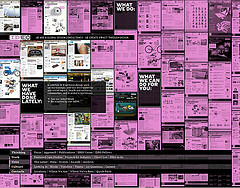
How can you make sure you do that? Here are three simple steps to writing killer content:
Ask a lot of questions. Bad Web content happens when writers rush off to write with only a vague idea of what should be on the Web pages they’ve been asked to create. Don’t skimp on research! The more you learn about your client company, the better they will like your Web pages. Once you’ve defined page lengths and deadlines with your client, here are some key questions to ask:
1. Why is this content being created? What is the goal here?
2. Who is the target audience?
3. What points of difference make this company stand out from competitors that I can describe in the content?
4. What similar company Web sites do you think do a good job in your industry, that I should look at?
5. Are there existing company marketing materials these Web pages should relate to in terms of style and content? If so, may I have copies?
6. Who else should I talk to at the company to learn more?
7. Are there customers I should get testimonials from for these pages?
8. Should I tour the plant, visit the store, drive around with a sales rep, or take other steps to gather more details on what you do?
9. What do you see as the ‘voice’ of your site? Is it friendly, authoritative, approachable, casual, funny, businesslike? Name three adjectives that describe the company personality you’d like to see expressed in the tone of your site.
Does this sound like a lot of work? It often is! But talking to an expert in a product or service, and gathering a lot of company background, will make the actual writing so easy.
Listen to their language — then, use it. Listen carefully to the exact words your company sources use as they talk about their products or services. Take detailed notes. Do they talk about “providing expert guidance” a lot? Say their toys are “the best-made in the industry”?
When you go to write, use exactly these phrases. Don’t get all cocky and “creative” and think your job as the writer is to come up with other ways to say what they just said. Instead, make the site sound just like them. Clients will be blown away. “That’s exactly what I was looking for!” will be a typical comment. Sure, you may need to vary these phrases so you’re not saying the exact same thing 10 times on a page. But stick to the spirit of what they told you as you craft the content. Get out a thesaurus if need be to find other words that are close to their favorite phrases.
Capture their tone. If the CEO is a pretty straight-arrow, formal, suit-wearing kind of guy, don’t use contractions.
Imagine the head of the company is going to read your page out loud to prospective customers. Create something that would work for that.
Deal with rewrites professionally. This is the stage where many new writers run into trouble. You thought your first draft was amazing…but your client may want lots of changes. Several different company teams or individuals may separately make suggestions. You may want to limit the number of rewrite rounds you allow before charging more in your contract.
The key at this phase is to stay calm, open-minded and professional. Remember, ultimately, it’s their Web site. They’re the boss.
Especially when you’re starting out, don’t be too worried about how initial projects break out in terms of hourly wage. They may not pencil out well, as you’re learning how to do great Web content here. All that really matters is that the project is a big success, the company is thrilled, and you get a sample you can proudly show your next crop of prospects.
Do you have any other tips, or questions about how to deliver great Web content? Leave a comment below.
Want more free tips on how to earn more money from your writing? Subscribe to Make a Living Writing.
Photo via Flickr user Digital Markketing









